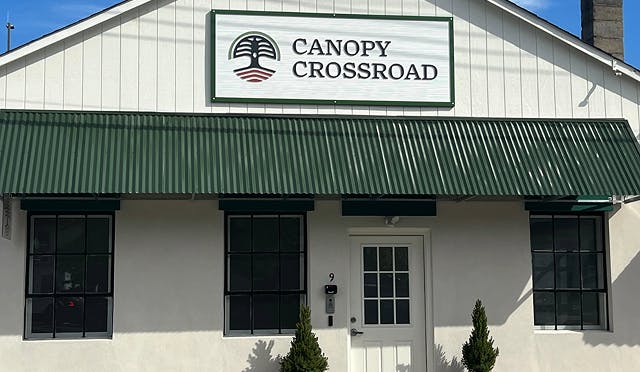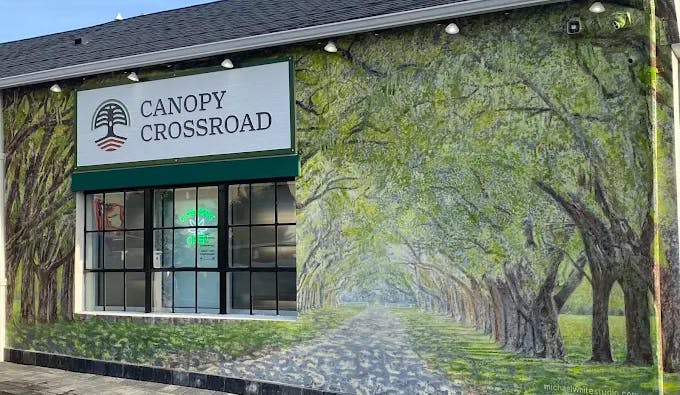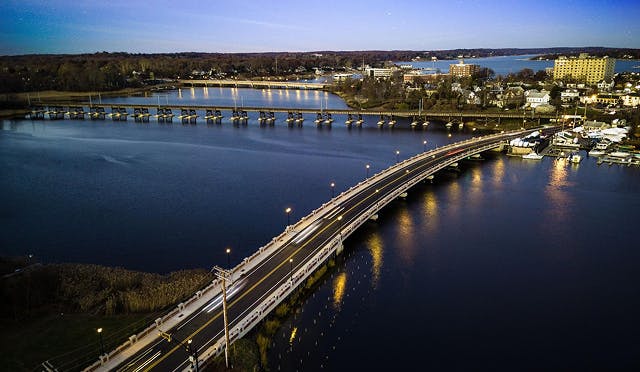This month, we were lucky enough to host a talk by Don Parisi of Bennabis Health about cannabis as medicine. At Canopy Crossroad, we are deeply invested in our community, education, and science. That’s why, in conjunction with the Red Bank Mayor’s Wellness Campaign, we are running a lecture series about cannabis education and related disciplines.

In this article we dive into America’s changing views on medical cannabis, the endocannabinoid system and the plant's medicinal benefits, the current barriers in research and regulation, and the financial and insurance challenges of medical cannabis access. You can watch the full presentation with Don on our YouTube Channel, Canopy Crossroad's High Notes.
Don Parisi is the President of Bennabis Health and a longtime insurance executive with over 30 years in the industry. He previously served on the Board of Trustees for Compassionate Care Foundation, one of New Jersey’s first medical cannabis treatment centers, and brings deep experience from both the insurance and cannabis sectors. Don founded Bennabis Health to bridge the gap between healthcare coverage and access to medical cannabis.
A New Conversation Around Cannabis
“The foundation of our approach is that cannabis is medicine,” says Parisi. “That’s what we foundationally believe in.”
Don outlined how many Americans have had a shift in mindset when it comes to thinking about cannabis. “We’ve been seeing, over the last five to ten years, increasing acceptance of cannabis as medicine. The federal government even proposed rescheduling cannabis from Schedule I to Schedule III—which is the same category as Tylenol with codeine.”
Today, 88% of Americans support legalized medical cannabis, and 40 states have established medical cannabis programs. In fact, cannabis is the most commonly used federally illegal drug in the United States: 52.5 million people—about 19% of Americans—used it at least once in 2021.
Understanding the Human Body’s Endocannabinoid System
“The human body actually has a cannabinoid system... It wasn’t even discovered until the late ’90s.”
This network, known as the endocannabinoid system (ECS), helps regulate balance—or homeostasis—across sleep, mood, appetite, pain, and immune response. The two primary receptors, CB1 (in the brain and central nervous system) and CB2 (in the immune system and peripheral tissues), are uniquely suited for cannabinoids.
“CB1 and CB2 are the receptors in our bodies that respond to cannabinoids and terpenes. They’re aliphatic—fatty—receptors. Cannabis compounds are also aliphatic, which is why they interact so well.”
“When the body doesn’t make enough of something—like vitamin D—you supplement it. Same with cannabinoids. Phytocannabinoids from plants help fill in the gaps and support balance throughout the brain, lungs, muscles, vascular system, and more.”
For a deeper dive into the ECS, Harvard Health and Healthline offer accessible overviews.
From Plant to Pharmacy: What Cannabis Really Contains
“The cannabis plant is natural. It contains phytocannabinoids—‘phyto’ meaning plant-based. There are more than 100 cannabinoids in the cannabis plant, and only a handful have been studied enough for us to speak on them,” Parisi said.
“Cannabis also contains terpenes, which are found in many other plants. For example, carrots contain a terpene that makes them orange. Terpenes in cannabis are essential—they help activate the medicinal properties of the plant.”
Cannabinoids and terpenes work together through the entourage effect, which suggests these compounds are more effective in synergy than when isolated.
For more about cannabinoids, terpenes and the entourage effect, see Leafly Science and Project CBD.

Where the Research—and Regulation—Still Lags Behind
“Cannabis is still a Schedule I drug. It’s crazy that we’re still talking about that. Until two years ago, the only place in this country that could provide cannabis for study was the University of Mississippi. And the cannabis they were producing was garbage.”
Recently, the DEA authorized new cultivators to supply researchers, with facilities like Drexel University now conducting studies. Still, clinical research remains slow due to regulatory barriers and individual variation in the ECS.
The National Academies of Sciences, Engineering, and Medicine found “conclusive or substantial evidence” for cannabis in treating chronic pain, chemotherapy-induced nausea, and MS-related spasticity, but stressed that federal restrictions continue to stifle broader trials.
Chronic Pain, Anxiety, Epilepsy, Sleep—What Conditions Can Cannabis Can Help With?
“There’s only three letters of the alphabet that don’t have a condition associated with them that cannabis can cover.” Many common conditions include:
- Chronic pain: Strong evidence supports cannabis for pain management.
- Neuropathic pain: Cannabis has been described as “steroid-sparing” or “opioid-sparing,” helping patients remain functional. “Many patients… couldn’t get out of bed without cannabis,” Parisi said.
- Epilepsy: Cannabis may reduce seizure frequency and severity. When describing a young patient he came into contact with, Parisi explained, “it’s not curing epilepsy, but it’s reducing the gravity and frequency of his seizures.”
- Sleep: Up to 50% of patients in some surveys cite insomnia as a reason for cannabis use. “Most people I talk to have tried everything else, and this is the one thing that helps them sleep,” Parisi added.
- Cancer treatment side effects: Cannabis is well-documented for helping with chemo-induced nausea and appetite loss.
A Better Way to Manage Medication Costs? Cannabis Vs. Pharmaceutical Drug Prices
For many patients, cannabis isn’t just a medical choice—it’s a financial one. Parisi highlighted the story of his co-founder with multiple sclerosis: “Her MS drug regimen cost $9,000 a month. She chose cannabis instead—for $1,000 a month—and has managed her symptoms for over 13 years. But she could only do that because she could afford it. We want others to have the same choice.”
He added: “I helped run a health plan in Red Bank back in the '90s. I was on the board of one of the first dispensaries in New Jersey. I saw patients who needed cannabis but couldn’t afford it. That’s why we started Bennabis Health—to get it covered.”
The contrast is clear. While cannabis—though still expensive—is often significantly cheaper, it is rarely covered by insurance, meaning many patients still remain priced out of access.
The Push for Employer Coverage: Does Insurance Cover Medical Marijuanna?
The short answer is no - most health insurance providers and employee programs do not cover medical cannabis because marijuana remains classified as an illegal Schedule I drug under federal law, despite state by state legislation. Despite this, there have been some hopeful breakthroughs in recent years due to the hard work of advocates and experts.
Bennabis Health aims to normalize cannabis within the healthcare system by making it a covered benefit. “We actually made U.S. history,” Parisi said. “Three public entities in New Jersey signed on to give employees access to discounted medical cannabis through Bennabis Health. It’s not full coverage yet—it’s a discount program—but it’s a step forward.”
Coverage requires one critical element: the medical cannabis card. “Some people ask, ‘Why get a medical card if I can just buy cannabis recreationally?’ Well, if you want your employer or health plan to cover it, that card is key. Coverage doesn’t apply to non-prescription products.”
The goal, Parisi explained, is parity: patients paying a small copay, dispensaries being reimbursed, and cannabis being treated like any other prescription drug.
What Comes Next for Medical Cannabis Access?
The next frontier is coverage and federal recognition. Cannabis remains excluded from Medicare and Medicaid, leaving seniors—often the population most in need—paying out of pocket. Rescheduling under the Controlled Substances Act, FDA-approved cannabis-based medicines, and more employer adoption could all move access forward. “We’re trying to help people become more productive—whether their child is suffering seizures or they got hurt on the job and can’t return to work because the pain is overwhelming.”
Final Thoughts: Education, Not Advocacy
For Parisi and Bennabis Health, the mission is not to push cannabis but to provide education. “We’re not advocating for anything in particular,” he emphasized. “We’re educating. That’s the goal.”
“For nurses in the audience, we’ve partnered with a nonprofit called Leaf 411, made up of registered nurses who are cannabis experts. They help people who are curious but unsure, who don’t know what questions to ask when they go into a dispensary. These nurses can guide them—make them feel comfortable, or even help them realize it’s not for them. It’s purely educational.”
Resources like Leaf 411, a nonprofit of nurses trained in cannabis medicine, offer free patient support. Education empowers individuals to ask the right questions, weigh options, and make informed choices.
As more states, employers, and healthcare professionals engage with cannabis, education will be the foundation that ensures access is safe, responsible, and equitable.
Featured post

Why Canopy Crossroad Is Your Most Trusted Dispensary in Red Bank
As New Jersey’s cannabis market continues to expand in 2025, consumers are still curious about tryin...

Cannabis as Medicine: A Conversation with Don Parisi of Bennabis Health
This month, we were lucky enough to host a talk by Don Parisi of Bennabis Health about cannabis as m...

The Athlete’s Guide to Cannabis: How to Recover Smarter with THC, CBD, and CBN
In the United States, cannabis users have traditionally gotten a bad rap. At best, they’ve been slot...

The Rise of Delta-8 THC: What You Need to Know About Cannabis Regulation and Health-Conscious Consumption
The passage of the 2018 Farm Bill was a game-changer for the cannabis industry in the United States,...

Curious About Cannabis: Part II
With the growing acceptance and availability of cannabis products, more people are exploring how the...







